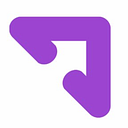A day in the life of a content strategist….
The audiences, team members, content type, and products may be completely different, but I always follow a similar process for creating and publishing content here at Upside.
1. Learn about the product feature.
It’ll be a Slack, a JIRA ticket, or a passing comment — but someone needs words somewhere.
I schedule meetings with project managers and read their requirements documents to get all the details on what I’m writing about and (most importantly) who I’m writing for. I’ll also take note of any new content I need to create and existing content I need to update as an output of the request.
I create a JIRA ticket on my personal board with a “jobs to be done” title to put the user at the forefront of the request. This is my “safe place” to track all working docs, Invision boards, and other pertinent information as I dive into building the content.
2. Collaborate with a UX designer.
It’s so much easier to see what this new product feature looks like before putting pen to paper. The questions I ask in these meetings are typically what a user would ask as well. We review the challenge we’re solving for, walk through the user experience, and ideate on how the content design can enhance our shared vision.
I get to collaborate with UX designers and review every single piece of text they’ve written (or haven’t) on their prototypes. I get to learn how the feature works, while brainstorming the perfect call to action, or making a list of all the tooltips I need to create to help inform the user along the way.
3. Brainstorm, draft, and edit.
Most of my days are spent editing and writing in-product messages, user-interface text, onboarding articles, marketing and sales content.
I regularly reference style guidelines and often ask my peers a ton of questions so that I’m staying consistent with the voice and tone of the company while remaining empathetic to the end-user.
My magic trick is Hemmingway Editor. At this stage, I’ll wrestle with a sentence or phrase until it’s a Grade Level 6 or below and sans passive voice. The end result is always clean, clear, and concise copy.
4. Roll with the punches.
I put my armor on each morning, and let the feedback flow. Red lines, comments, edits are pouring in from cross-organization stakeholders. I remind myself, I’m going to battle for the user — not myself — and take nothing personally.
Marketers may want white-lie promises, counsel may want disclaimers as headlines, engineers may want to explain how all the back end features work… No matter what, I always ask myself: What does the user want? What does the user need? Why does the user care? How much time does the user have? What does the user already know?
This is how I avoid making a “camel.” “A camel is a horse designed by a committee.” What’s key here is taking all of the input and feedback from stakeholders with a grain of salt. And, always putting the true focus on what the user wants and needs, not only the company or it’s stakeholders. This is where I continuously come back to the “jobs to be done” framework — it helps keep us all on track and always put the user first.
5. Ship it.
Once I’ve made it through the feedback loop, final edits are added to Invision prototypes, and the first part of my process is complete. Now, I watch the engineers get to work and ship the content out to the world.
I’ll attend demos to watch and listen to live feedback from the team. I’ll host usability testing to hear real customers struggle over my words. I’ll gain metrics from data science to analyze the efficacy of the content. I’ll start learning from what’s been sent out into the world, and then…I iterate.
6. Iterate and repeat.
I repeat all steps above as needed to get the best, most effective content to our customers. In that process, get to work with folks from the entire organization every day. Most importantly, I get to learn from each of them, daily.
What’s in it for me?
Confused users don’t stick around. I provide them with the clarity they seek — with of course a little (a lot of) help from my friends (AKA the Upside team). It’s pretty exciting work when your voice is heard and read by tons of people every day. To know that you’re helping them achieve their intended actions is also pretty awesome. But most of all, I get to tell some of the smartest people I’ve ever met, “No way dude, that makes no sense,” and we get to put our noggins together to craft the perfect message…and, we get to have fun doing it.
Want to join our team and create awesome content? Apply today.

